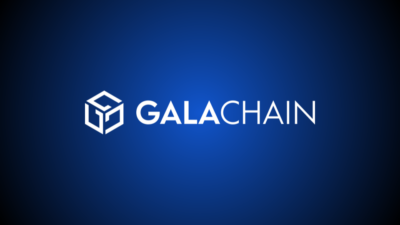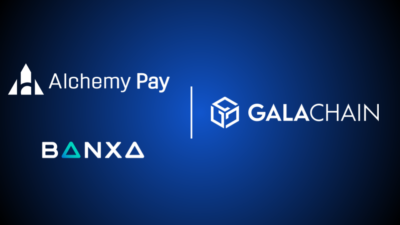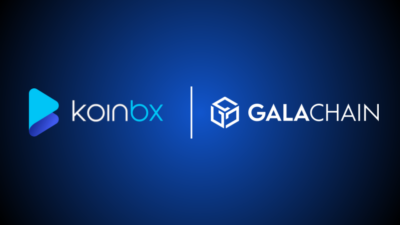Editor’s Note: We love spotlighting people building on GalaChain. The following article was written by Graham from the NFTD team, the top Judges’ Choice pick during March’s GALAthon. NFTD is a tower defence game being developed by several long-time Gala community members, who are currently working on integrating the game into GalaChain. The game itself offers multiple opportunities to utilize items from across the Gala ecosystem… we love some cross-utilization here at Gala!
Graham (who you may know as cryptograham on Discord) was gracious enough to write not only a description of NFTD and their work at the hackathon for us, but also gave some amazing insight into their process and design philosophy! Far be it from us to get in the middle here… so we’ll hand it off to Graham himself!
NFTD is an arcade style tower defence game with the goal of defending your fortress from endless waves of attacking enemies. You can mine resources in the game by placing resource extractors and use the proceeds of those extractions to buy and place towers to defend your base. There are a variety of towe rs you can place in the game; arrow towers, cannon towers, fire, ice, poison, etc.. all dependent on the NFTs you have in your connected wallets.
The towers in NFTD, are all representations of different NFT projects from various groups/companies throughout the web3 space. The Gala Games project Fortitude is the main source of inspiration, where holding a Fire Tower in your Ethereum or GalaChain wallet lets you place a similar themed fire tower in the game. Having one of the BT Orbs, which dropped about 2 years ago, lets you place an Orb inspired tower in the game with healing range effects on surrounding structures.
You can find NFTD at nftd.gg!
Our Hackathon Work
During the GalaChain Hackathon at GDC, we introduced A Snoop Dogg inspired “BeatBox” tower, where holders of the “Death Row Records – Gold Chain” NFT are able to place that tower in-game and holders of the “888 Inner Circle – Blue Realm” NFT can place the “Blue Realm Orb” tower.

Also at the hackathon, we introduced our own custom GalaChain contracts to create $HOPIA, our in-game minable token and “The Tower of Hopia”, a GalaChain NFT Tower purchasable in $HOPIA. $HOPIA is generated through mining activities performed by our in-game extractors. There is a small percentage chance of hitting a HOPIA Motherlode and being able to extract it. This provides players with another in-game task of protecting their extractors in addition to their fortresses, so they can stay alive longer and get their hands on more of the token.
As part of our custom GalaChain contracts we also introduced functionality for starting and ending games with various pieces of data that we can store for after game analytics. What’s really interesting about the way we did this is that when you start a game, the custom contract will lock the GalaChain NFTs you are using in-game.
So, when you start to play the game, you can’t immediately send your towers to someone else, that wouldn’t be fair. Once the game ends, your towers are unlocked, and you can trade as you please. This is really interesting functionality that I’ve only ever seen available to Galchain. It’s really neat!.
Image: Token lock snip
Caption: GalaChain is designed for utility and customization. This is just one benefit of permissioned contract functionality on GalaChain
As a bonus, during the hackathon, we had the opportunity to chat with Mark Skaggs, a legend in the RTS space and one of the key minds behind Farmville, Red Alert 2, LOTR: Battle for Middle Earth, and numerous other successful titles. He played our game and was able to give us some excellent feedback on his experience and ways we could improve.

This was invaluable information that we wouldn’t have received if we didn’t come in-person to the Hackathon. This moment alone was worth it for me. As an homage to him, we added a secret code in-game to unleash the Kirov Airship from Red Alert 2 in-game. I won’t tell you what the code is, but it’s in there.
The origin of the game
The idea for this sort of cross-chain interoperable game came from a conversation in the Gala Games Platinum Club discord, when forgedincrypto posted a picture of his Fortitude collection of NFTs sayings “Wouldn’t it be cool if I could actually play with these towers in game”, as the Fortitude game is still in development. I then responded, saying that I had built a tower-defence prototype a while ago, while learning some new game development coding concepts, and with a few changes, e.g.. adding in wallet lookups and putting in some specialty towers, we could put out a quick game for people to play while they wait for the real one to launch from the Fortitude developers.
I began working on the project to create the proof of concept, showed it to a few community members, which brought me in-contact with Timboslice (Tim) and Deadily (Drew), who were also excited by true interoperability in web3, so we partnered up, and they began working on a new art design direction.
In terms of how the three of us work on NFTD, Tim leads the design efforts, game art style, tower design, game lore, tokenomics and player economy management. Drew has built out the galachian blockchain integrations, custom contract code and the REST API layer to talk to GalaChain. I (Graham) do all the core game development work needed to play the game, taking the artwork and turning it into playable game objects, wave management systems, upgrades and game progression, scoring and leaderboards. I also do the web3 wallet and player authentication integrations too. There is a lot of stuff involved in making a game and we’re a pretty balanced team seeing it through.
A lot of existing projects out there build their own NFT collection for their own games. What brought us all into the space was the promise of taking NFTs from one project and being able to use them in different projects, or in different ways entirely, as we own our own assets.
As a kid growing up, I could take my Luke Skywalker (Star Wars) action figure and put him in my Ninja Turtles Party Wagon with Michelangelo (TMNT) and drive over to go all Cowabunga/Jedi on Shredder (TMNT) and his Cobra villain associates (G.I. Joe). That’s the level of true interoperability that the three of us are looking to build in the web3 space.
For me personally, over the past couple of years, I have been working on a few indie game projects taking NFTs from various projects and mashing them up into quick game prototypes. For example, one of my games, “Vox Battles: The Dead” (https://voxbattles.com/thedead) puts characters from the Vox Collectables: The Walking Dead project into a zombie runner style game, where you play as one of the human VOX characters, scavenging for resources, weapons, health boosts, and batteries for your flashlight, you run around avoiding or killing the Walker VOX characters. As you play the game, the eerie music that plays in the background is actually from one of my NFTs from the BT Orbs collection. All of the characters that I used in that game were provided by community members (with attribution in-game).
I have also been working on a multiplayer battle royale game called Vox Battles, which puts a group of Vox players into an arena, heavily inspired by the Hunger Games series, to battle it out until one person emerges victorious. You can wishlist it on steam now!
VOX Battles is live on Steam!
What I really love about working on NFTD, is that it really expands on the opportunity for interoperability, especially with the thematic design that Tim has created, where each NFT you own becomes a sort of chess piece available to use on your tower defence board, and depending on the board, you won’t be able to use them all at once, so you’ll have to be strategic with which pieces you bring into the match.
Future Plans
With NFTD we are just getting started. The 2D isometric version was our proof of concept, to see if there was appetite out there for a fast paced tower defence game bringing in NFTs from lots of different projects. Turns out, there is.
We’re committed to continue building out the experiences. Adding more NFT project integrations into the current version and working with Gala to bring NFTD to GalaChain, so you can generate $HOPIA and spend it… not just on the few select GalaChain Towers, like the Tower of Hopia, but also on a few other things.
Besides that, we are working on the competitive aspects of the game. The competition we held during the Hackathon saw about 100 players join in on the NFTD fun, but also showed a few platform vulnerabilities that we will need to work out.
We are moving towards an authoritative server architecture, and I’m taking that opportunity to re-work some core logic and add a third dimension to the game.
In the coming months, as we continue to iterate and fine-tune NFTD with the community, our goal is to truly embody what web3 interoperability and collaboration are all about. If our work with Gala proves successful, GalaChain will play a central role in this mission and we are very excited to be building on chain.
As an editorial, the thoughts and opinions expressed in this article are those of individuals on the NFTD team and not of Gala.
You can check out more of Graham’s work with his studio at https://alienplanetgames.com/
We’re excited to hear more developments for NFTD on GalaChain in the future!





